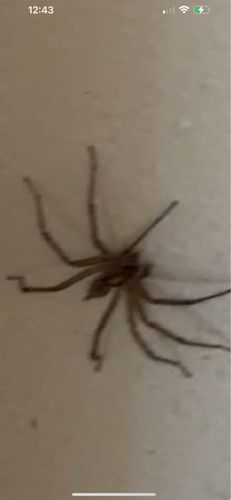House Spider
Scientific Name: Tegenaria domesticus
Order & Family: Araneae, Agelenidae
Size: Body length 7-12 mm (females), 6-9 mm (males); leg span up to 45 mm

Natural Habitat
Commonly found inside homes in corners, basements, attics, and cluttered areas. Also found outdoors under rocks, logs, and in sheds.
Diet & Feeding
Insectivorous. Feeds on various insects and other small arthropods that get caught in its web, such as flies, mosquitoes, and small beetles.
Behavior Patterns
Builds funnel-shaped webs to catch prey. Generally nocturnal and reclusive, often staying hidden during the day. Females remain in or near their webs, while males wander in search of mates. Non-aggressive, biting only when provoked or accidentally pressed against skin.
Risks & Benefits
Risks: Bites are rare and generally harmless, causing mild local pain and redness, similar to a bee sting. Not considered medically significant. Benefits: Acts as a natural pest control by preying on common household insects.
Identified on: 9/13/2025